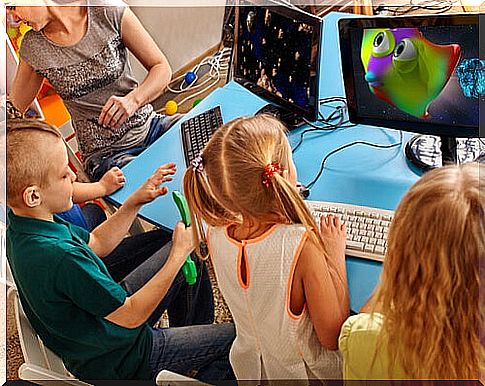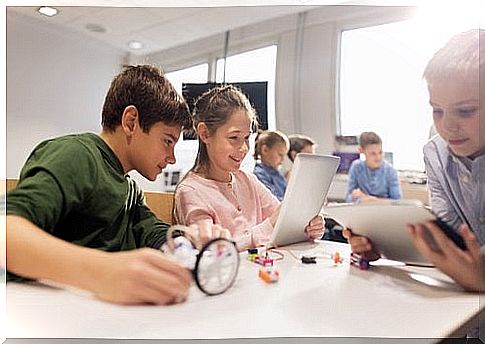Multitasking Children, Advantages And Disadvantages?

New technological devices have caused many attitudinal changes in society. One of them is the feeling of being able to do “many things at once”. Young people, as great users of modern technology, are not left out of this phenomenon. What are the characteristics of multitasking children?
A fairly common portrait in these times is to see a child doing a large number of things at the same time. For example: while they are doing their homework, they are talking on WhatsApp with their friends, they listen to music and they watch, out of the corner of their eye there in the background, what is happening on television. Every five minutes, they also check what’s new on social media.
Parents often complain, but neither do they have the power to recriminate too much. Do not adults – despite the fact that it is forbidden – usually drive and talk on their cell phones at the same time? Or do your work while chatting with a colleague?
Multitasking children are one more part of a society that is increasingly entering this path. However, as always happens, quantity is not synonymous with quality …
Characteristics of multitasking children
Multitasking children tend to exhibit the following behaviors:
- They use several devices at the same time: they may be watching a program they like on television, but they will also be chatting, browsing and even watching videos on their mobile.
- Music is always in the background – they usually like to study, work, or hang out while listening to music. This, many times, impairs your concentration.
- They believe they are more productive: far from noticing the negative consequences of multitasking, children believe they can do everything at once.
The deficits that multitasking children present
First of all, it must be made clear that human beings are not capable of paying attention to two things at the same time. Not even when one of the actions is performed automatically. Have you noticed that when you are walking and you have to pay extreme attention to what they tell you on the phone, you slow down or directly slow down?

What people, including multitasking kids, do is quickly redirect attention from one action to the other. This is known in the field of science as “continuous alternation of attention.”
Although at first glance it may sound like a typical ‘megacapacity’ of evolved beings of the 21st century, the truth is that it is not something entirely convenient. Multitasking children, as well as all multitasking people in general, tend to have the following drawbacks:
Lower quality of work
It is impossible to do two things at the same time and do them well. Inevitably, no matter how much effort you put in, the most important thing will always get a higher percentage of attention. In that “coming and going” that the brain performs from one action to the other, many details will be lost that would not be overlooked if our full attention were on it.
When switching from one activity to the other, concentration stops and must be restarted to start something new. Then when you switch back, the process repeats. This, in addition, favors deconcentration, since the brain is unable to focus one hundred percent on something without paying attention to the context.
Greater mental wear
It is proven that multitasking children tend to end up “burned” by their activities. This happens even when not much has been demanded of them. What happens is that, by trying to do so many things at once – even though many of these actions are of minimal importance – the brain tires more and in less time.
The reason is exactly the same as for the previous section. Stopping concentration and focusing on something else every few minutes produces great anguish and stress on the mind.

Loss of concentration and memory
In the Stanford research cited above, specialists analyzed certain abilities of students through different cognitive activities. Both in the one that required concentration to follow a command and in the one that tested memory, the groups of young people with “less multitasking ability” did considerably better than the others.
Although this study was done with adolescents, its effects could carry over to multitasking children without problems.
Finally, there are also those who support the theory that millennials incorporate this ability to focus their attention on multiple objects. In fact, there are studies that speak of “super-tasks” people and their characteristics and capabilities are being investigated.
However, despite some exceptions, and also taking into account that many companies are making big changes to favor this mutitasking power , it is still not very viable for most people.
Its disadvantages are much more proven than its advantages; it will be better to go one thing at a time, even if technology makes us feel omnipotent many times.









